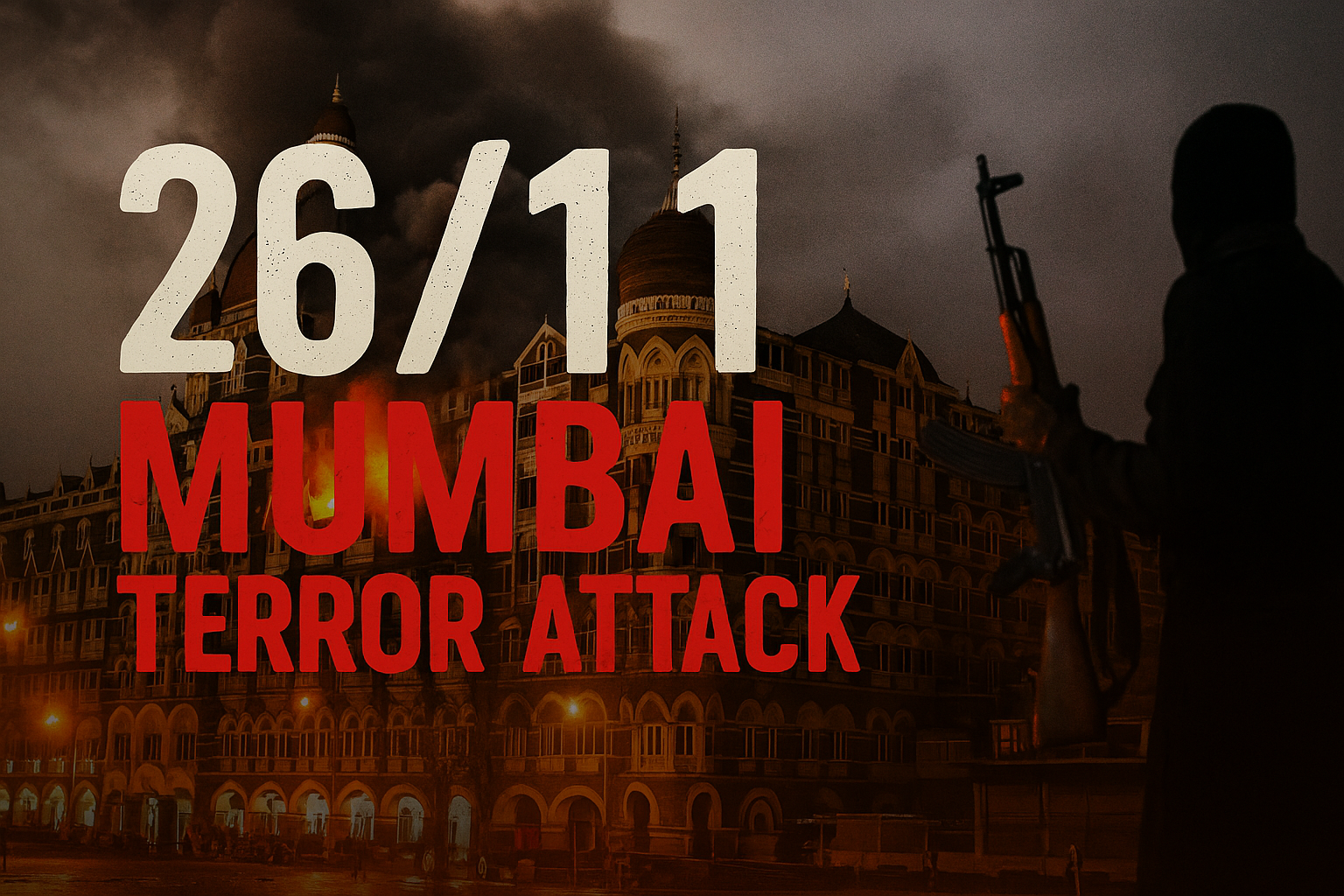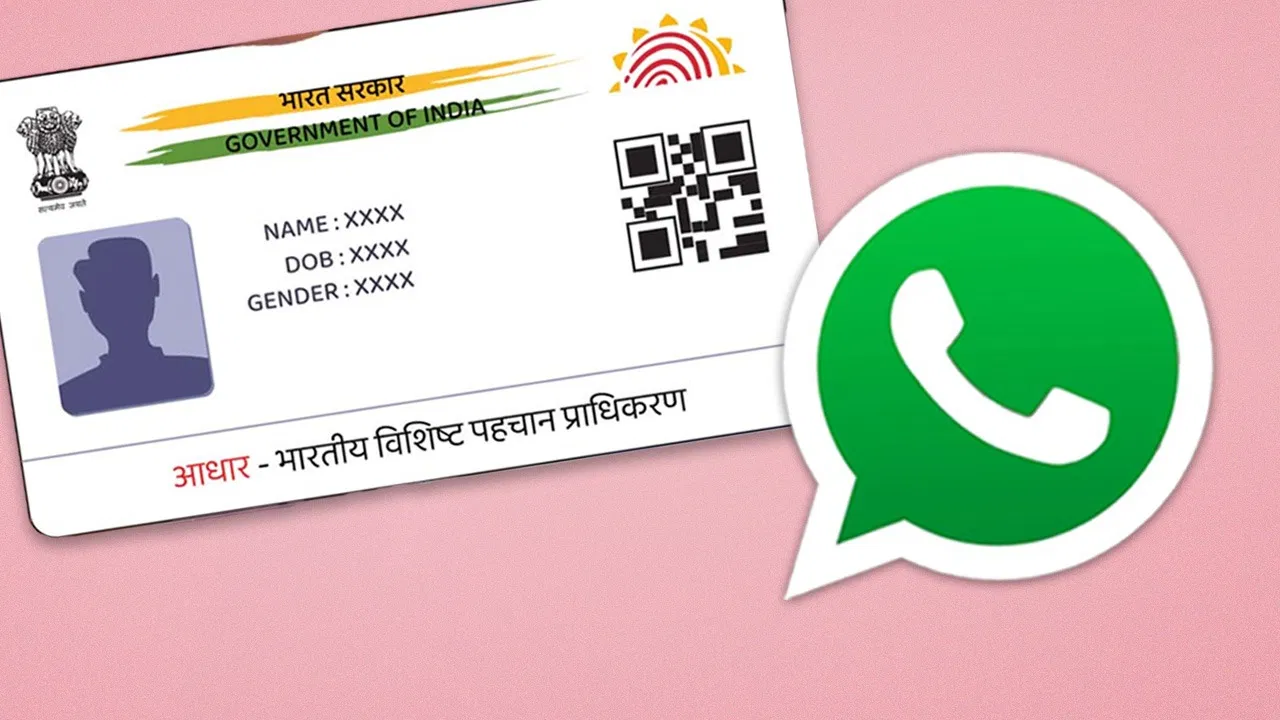What Were the 26/11 Mumbai Attacks?
On the evening of November 26, 2008, the city of Mumbai came under siege in a horrific event now known as the 26/11 Mumbai attacks. A group of 10 heavily armed terrorists, trained and sent by Lashkar-e-Taiba (LeT), infiltrated India via sea route from Pakistan, launching one of the deadliest terrorist assaults in modern Indian history.
For 60 hours, the terrorists attacked iconic locations, causing chaos, fear, and destruction. The Mumbai terror attack full story remains one of the most devastating and eye-opening events in the fight against global terrorism.
26/11 Timeline: Step-by-Step Breakdown
November 26, 2008
8:10 PM: Terrorists land at Colaba after hijacking an Indian fishing boat.
They split into five teams and begin a series of coordinated shootings and bombings.
Terrorist attacks start at:
Chhatrapati Shivaji Maharaj Terminus (CSMT)
Leopold Café
Taj Mahal Palace Hotel
Oberoi-Trident Hotel
Cama Hospital
Nariman House (a Jewish outreach center)
November 27–29, 2008
Fierce gun battles continue at the Taj Hotel, Nariman House, and Oberoi-Trident Hotel.
Elite forces launch NSG operation “Black Tornado” to eliminate the terrorists.
After more than two days of terror, the Mumbai 2008 attack is brought to an end by brave security personnel.
Key Locations Targeted in the 26/11 Attack
Taj Hotel Attack: Iconic symbol of India’s luxury and hospitality turned into a warzone.
Oberoi-Trident Hotel: Dozens killed; guests held hostage.
CSMT: Over 50 civilians massacred in a brutal shooting.
Leopold Café: Popular with tourists; hit by grenades and bullets.
Nariman House: The Jewish Chabad House where multiple hostages were killed.
Casualties and the Human Cost
166 people killed, including 26 foreign nationals
Over 300 people injured
9 terrorists shot dead, 1 captured alive — Ajmal Kasab, the most recognized face of the 26/11 Mumbai attacks
Ajmal Kasab: The Face of Terror
The lone surviving terrorist, Ajmal Kasab, was caught alive by Mumbai Police constable Tukaram Omble, who sacrificed his life to stop him. Kasab became the key to uncovering the involvement of LeT and elements within Pakistan. He was tried in court, convicted, and executed in 2012.
NSG Operation: India Fights Back
India launched Operation Black Tornado, led by the National Security Guard (NSG). Over 600 hostages were rescued, and nine terrorists were neutralized.
The NSG operation was a turning point in India’s approach to urban terror response. Despite lack of local intel and delays in mobilization, commandos fought bravely through grenade attacks, fires, and complex hotel layouts to eliminate threats.
Indian Heroes of 26/11
These brave souls laid down their lives for the nation during the Mumbai terror attack:
Hemant Karkare – Chief of Maharashtra ATS
Ashok Kamte – Additional Commissioner of Police
Vijay Salaskar – Encounter Specialist
Tukaram Omble – Caught Ajmal Kasab alive
NSG Commandos – Fought fearlessly at Taj Hotel, Oberoi, and Nariman House
Their courage, sacrifice, and quick thinking prevented the loss of hundreds more lives.

Global Reactions to the Mumbai 2008 Attack
The world stood in solidarity with India.
Countries including the USA, UK, Israel, and Russia condemned the attack.
The FBI joined Indian authorities in the investigation.
Pressure mounted on Pakistan to dismantle LeT and act against terrorism.
Aftermath and Lessons Learned
The 26/11 Mumbai attacks exposed major gaps in India’s security and intelligence systems. In response:
National Investigation Agency (NIA) was created.
Coastal surveillance and inter-agency coordination were improved.
Counter-terrorism laws were updated.
India also raised diplomatic pressure to expose LeT’s links to ISI, Pakistan's intelligence agency.
Media & Films Based on the 26/11 Mumbai Attacks
Hotel Mumbai (2019) – A Hollywood take starring Dev Patel and Anupam Kher.
Terror in Mumbai (HBO/Channel 4) – Real footage and Kasab's interrogation tapes.
Mumbai Diaries 26/11 (Amazon Prime) – A dramatized medical response series.
These works keep the memory of the Mumbai terror attack alive and remind us of the bravery shown during those dark days.
Read More: Waqf Bill 2025 Explained: A Bold Move or A Controversial Step?
Final Thoughts
The 26/11 timeline is not just a list of tragic events—it is a reminder of human resilience and the price of freedom. From the walls of the Taj Hotel to the streets near Nariman House, the bloodshed of innocent civilians and the sacrifices of security personnel echo a clear message: India will never bow to terror.
Let us honor the heroes, remember the victims, and work towards a safer, united world.
Explore other popular Posts:
Blog | News | Entertainment | Education | Sports |
Technology | Cryptocurrency | Stock | Home | Sitemap





